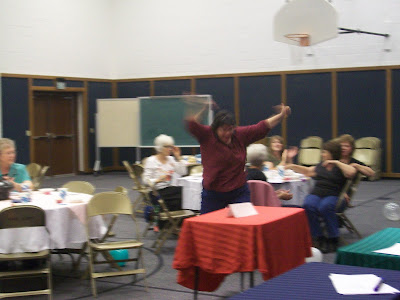
Hello Hello Hello :)
A question I get a lot is: "So, I have all this wheat...what do I do with it?"
Well, I was talking with my friend Marie the other day. She told me that a few years ago her grandparents served a mission in Adam-ondi-ahman. They decided as a couple that they were going to eat SUPER healthy. They made cracked wheat cereal, whole wheat bread, etc etc. They were so happy to be eating healthy...until...about a week into it, for the sake of the squeamish lets just say that her grandfather had some SERIOUS digestive trouble.
Poor Marie...she didn't know why in the world he was sharing this information with her. Well, Marie, it is because our "Tip-of-the-week" readers needed something to...chew on.
One of the big mistakes that Grandma & Grandpa made was that this much wheat is not something they normally eat. Their digestive systems weren't ready for all that. Our society is beginning to see many food allergies to wheat, soy, eggs, milk etc. I won't get into the hows and whys now, but if we HAVE to eat things that we aren't used to eating, some tummies might not be ready for that. So...lets plan ahead.
Suggestion #1: Plan several meals that you usually eat and have those items on hand...say, 3 months worth :).
Suggestion #2: Have at least one meal a week that is strictly food storage items. Pancakes are a good start :).
If you're going to be making Whole Wheat Bread, it is a good idea to also get "vital wheat gluten" found currently in the "emergency food isle" at Walmart. After many tries and failures, Sister Noelle told me that her husband uses the "vital wheat gluten" and 2 T to my 2 loaf batch turned out awesome!!! Thanks Noelle!
What if you have allergies to wheat? What if you want to cut gluten down in the things you currently eat in an effort to avoid gluten intolerance later? I have a tool for you! Check out Chef Brad
http://www.chefbrad.com/grain/articles.php?article=Wonder-Flour&qid=5
He has a natural "white flour" recipe and a gluten free flour recipe. I haven't tried them yet, but I'll let you know when I do.
And another thing....
While many are working this month on getting a hand crank wheat grinder, when you are first beginning to work with wheat use 1/4 wheat flour to 3/4 white flour. Then work it up to 1/2 wheat and 1/2 white etc. You can usually get about 1 1/2 C of flour out of 1 C of wheat berries.
I can get 6 bags of unbleached flour in a 5 gallon bucket from Walmart. The total cost for that is about $23. If you can find the flour for cheaper somewhere else GO FOR IT! I put a few bay leaves on top because WEAVLES hate bay leaves...and peppermint leaves...and lavender leaves or about 4 oxygen absorbers. You can get these at the cannery by calling Brother Estes @ 651-4681!















